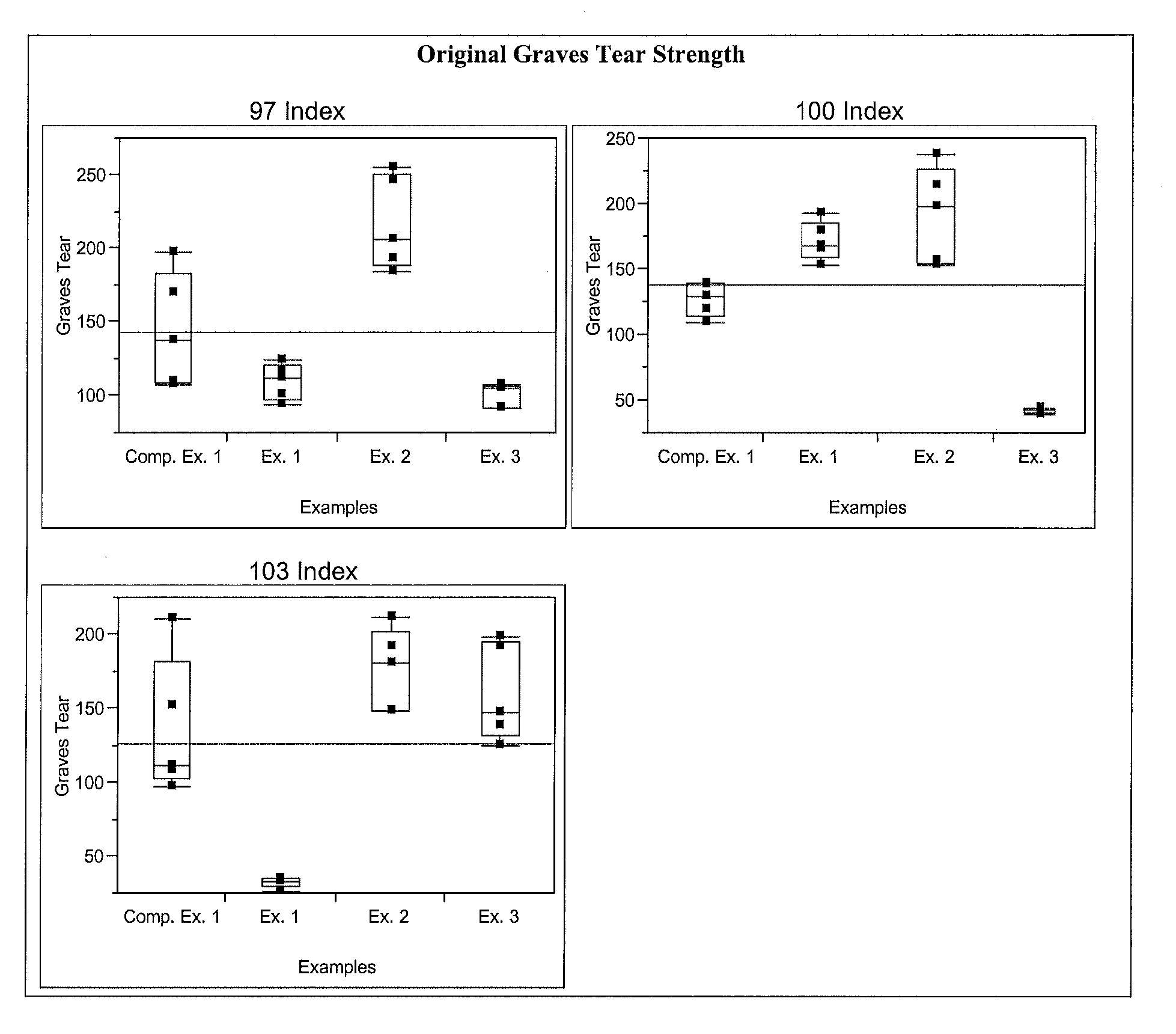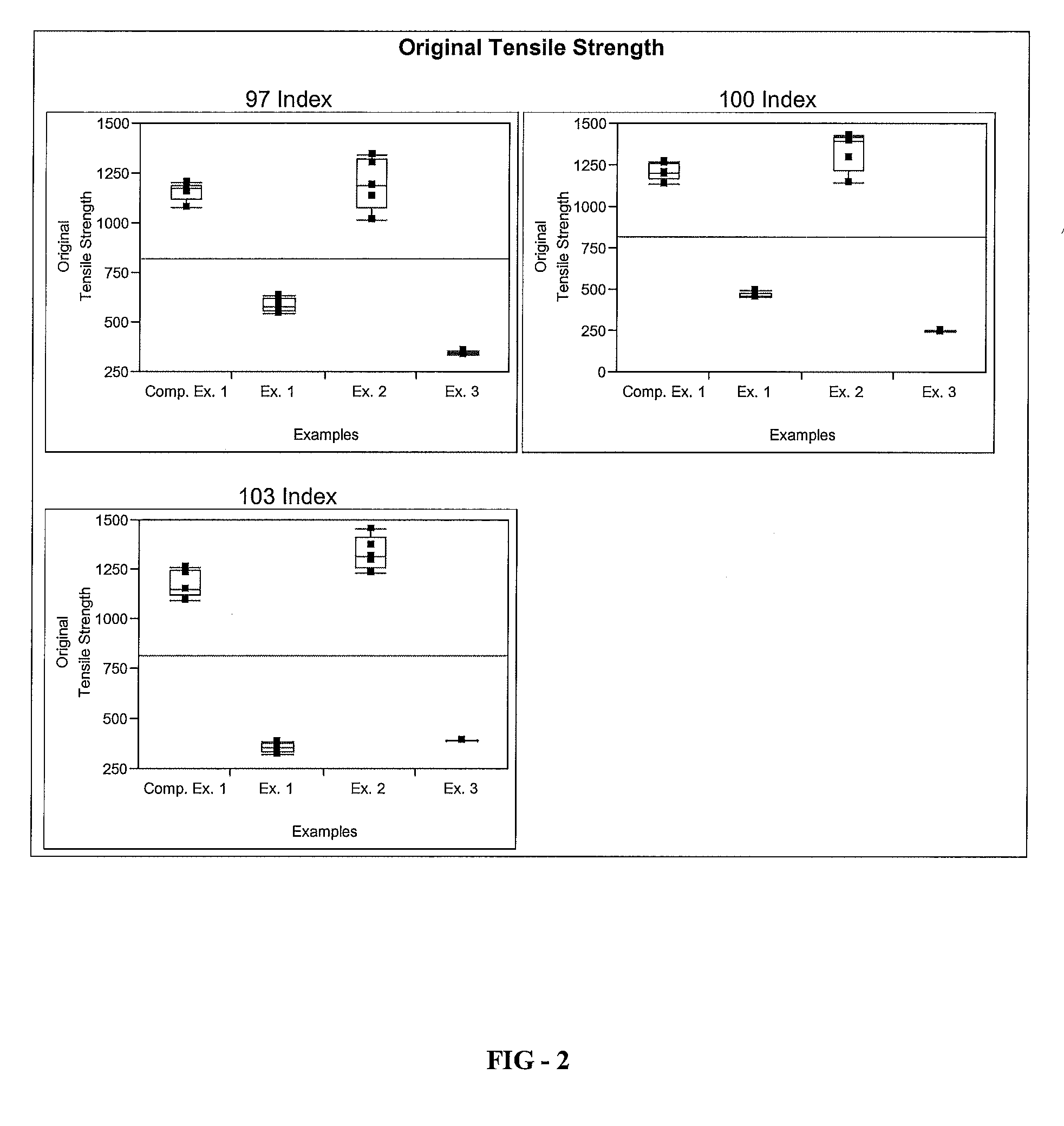Elastomeric composition
a technology of elastomeric composition and composition, applied in the field of elastomeric composition, can solve the problems of inability to reduce, production cost, and failure to adhere to surface coatings, and achieve the effects of reducing the levels of volatile organic compounds (vocs), reducing potential environmental pollution, and reducing potential odors
- Summary
- Abstract
- Description
- Claims
- Application Information
AI Technical Summary
Benefits of technology
Problems solved by technology
Method used
Image
Examples
examples
[0083]The following examples are merely intended to illustrate the invention and are not to be viewed in any way as limiting to the scope of the invention.
[0084]A series of elastomer plaques, Examples 1 through 3, is formed using the elastomeric composition of the present invention. To form the elastomer plaques, a resin component comprising Polyol A, Polyol B, Polyetheramine C, Catalyst D, Catalyst E, and Additives F-H is provided. An isocyanate component comprising Isocyanate X is also provided. The resin component and the isocyanate component are combined in a mixhead of a Decker C-Spray spray gun to form an elastomeric composition according to the processing parameters listed in Table 1. The elastomeric composition is applied on a 68° C. water-jacketed aluminum tool that is coated with Red Spot 458W black surface coating according to the processing parameters listed in Table 1. The elastomeric composition is cured on a heated tool at 68° C. for about 60 seconds to form the elast...
PUM
| Property | Measurement | Unit |
|---|---|---|
| Temperature | aaaaa | aaaaa |
| Temperature | aaaaa | aaaaa |
| Time | aaaaa | aaaaa |
Abstract
Description
Claims
Application Information
 Login to View More
Login to View More - R&D
- Intellectual Property
- Life Sciences
- Materials
- Tech Scout
- Unparalleled Data Quality
- Higher Quality Content
- 60% Fewer Hallucinations
Browse by: Latest US Patents, China's latest patents, Technical Efficacy Thesaurus, Application Domain, Technology Topic, Popular Technical Reports.
© 2025 PatSnap. All rights reserved.Legal|Privacy policy|Modern Slavery Act Transparency Statement|Sitemap|About US| Contact US: help@patsnap.com



